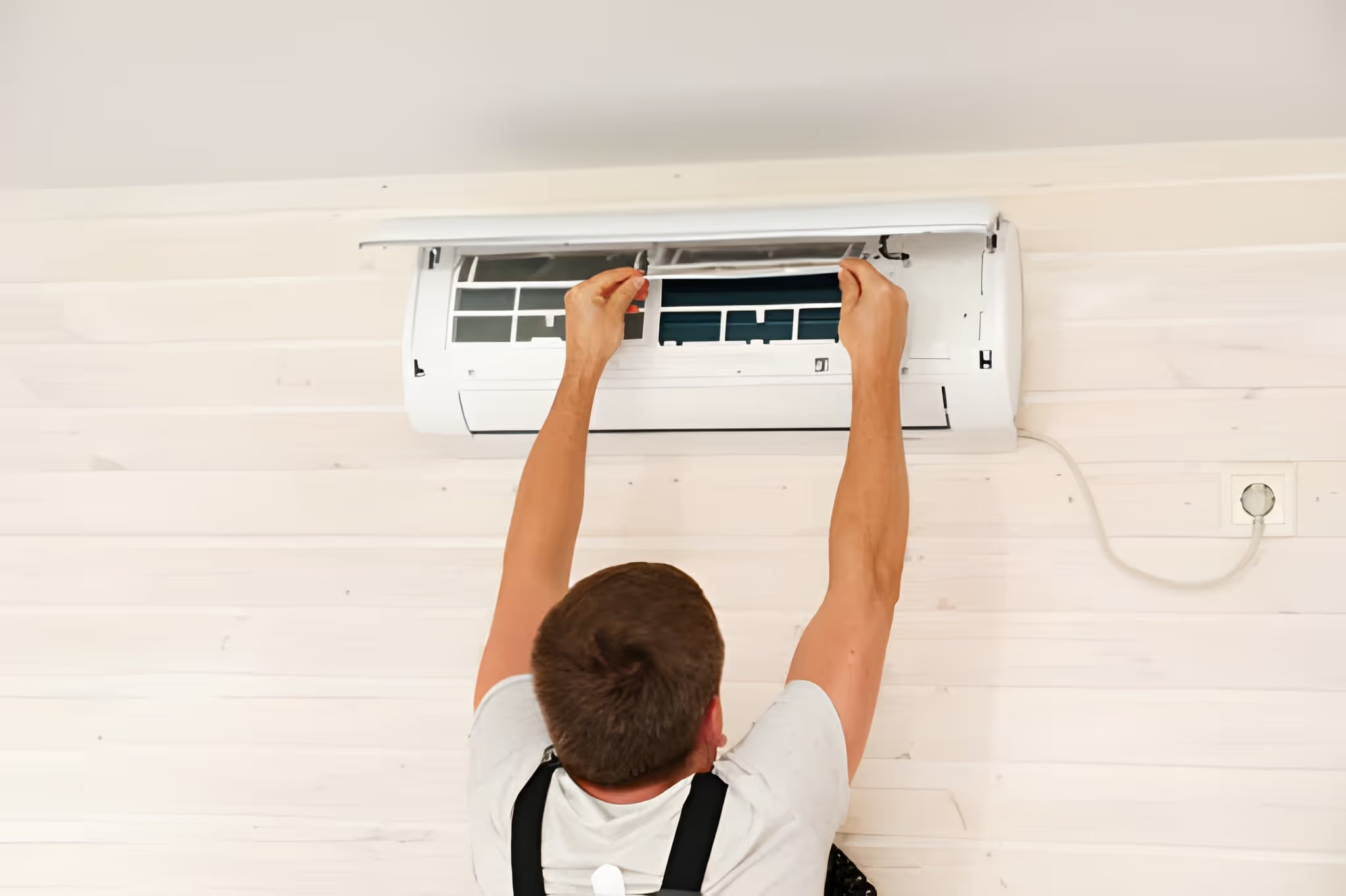Mini Split Tune-Up in Forney, TX
Keeping Mini Split systems running reliably is essential for Forney homes where long, hot summers and spring pollen can stress equipment. A focused Mini Split Tune-Up addresses the specific needs of ductless systems: air quality, refrigerant performance, and control accuracy. If your unit is producing weak airflow, uneven temperatures across rooms, higher-than-expected energy bills, or occasional noise and odors, a professional Tune-Up inspects and corrects the underlying causes so your system runs cleaner, quieter, and more efficiently.

Common Mini Split issues in Forney, TX
- Dirty or clogged filters from seasonal pollen and dust, reducing airflow and indoor air quality.
- Reduced cooling capacity due to dirty evaporator or condenser coils.
- Refrigerant loss or improper charge, especially after yard work or storms that can damage lines.
- Thermostat or sensor drift that causes temperature swings or incorrect room setpoints.
- Condensate drain clogs and secondary drain pan issues in humid months.
- Electrical connection problems and worn components that increase risk of breakdown during peak heat.
What a Mini Split Tune-Up includes
A comprehensive Tune-Up is an inspection-driven service that focuses on cleaning, measurement, adjustment, and documentation. Typical tasks performed during a Mini Split Tune-Up include:
- Filter cleaning or replacement
- Remove, clean, or replace washable and disposable filters. Clean filters restore airflow and reduce dust circulation in the home.
- Indoor blower and coil cleaning
- Clean the indoor air handler, blower wheel, and evaporator coil to restore heat transfer and airflow. Removal of dust and biofilm improves efficiency and reduces odors.
- Outdoor condenser coil and cabinet inspection
- Clear debris, leaves, and pollen from the outdoor unit and clean the condenser coil for proper heat rejection. Check for bent fins or physical damage.
- Refrigerant check and leak inspection
- Measure system operating pressures and temperatures to verify proper refrigerant charge. Inspect visible lines and fittings for signs of leaks or oil trace.
- Thermostat and sensor calibration
- Confirm indoor sensors and remote thermostats are reading and communicating accurately. Calibrate controls so set temperatures match actual room temperature.
- Electrical and safety checks
- Test and tighten electrical connections, check capacitors and contactors, and confirm safety controls and breakers are functioning.
- Condensate drain and leakage prevention
- Inspect the condensate drain, P-trap, and any condensate pumps to prevent water damage and microbial growth in humid periods.
- Performance verification and system report
- Measure supply and return air temperatures, check airflow at the head, and compare results to manufacturer specifications. Provide a concise system performance report with observations and recommended repairs or parts if needed.
Expected duration and scope
- Single-zone Mini Split (one indoor head): plan on about 45 to 75 minutes for a full Tune-Up depending on cleanliness and access.
- Multi-zone systems or multiple indoor heads: expect 60 to 150 minutes or more, scheduled by number of heads and complexity.
- If repairs are required beyond maintenance (refrigerant recharge, parts replacement), the technician will document findings and recommend next steps; additional time will be needed for corrective work.
Energy savings and operational benefits
Regular Tune-Ups restore a Mini Split to near-design performance which reduces energy usage, improves comfort, and extends equipment life. Benefits include:
- Lower energy consumption from improved airflow and heat transfer.
- More consistent room temperatures with reduced short-cycling.
- Reduced likelihood of mid-summer failures when replacement parts and service slots are scarce.
- Cleaner indoor air and less strain on filters and components.
- Documentation that can support warranty requirements and future service decisions.
Why timing matters for Forney homeowners
Forney experiences long cooling seasons with high daytime temperatures and variable humidity. Spring and early summer are the ideal times for a Tune-Up to remove winter dust and spring pollen before peak cooling demand. After extended heat waves, a post-season inspection can catch wear earlier and prepare equipment for winter operation if served by heat mode. Regular service also helps protect outdoor units from storm debris during active weather seasons.
Preparing for a Tune-Up and what to expect at the appointment
- Clear a path to all indoor heads and the outdoor unit; remove obstacles and secure pets.
- Note symptoms and the unit model and age if available; this helps the technician prioritize checks.
- Expect the technician to inspect, clean, test, and document. They will usually provide a brief system performance report describing measured temperatures, any issues found, and recommended follow-up work.
- Typical visit etiquette includes a service window or arrival time; the technician will explain actions taken and any immediate corrections made.
Maintenance frequency and long-term value
- Annual Tune-Ups are recommended for most Mini Split systems; homes with heavy use, pets, or high dust and pollen exposure may benefit from twice-yearly checks.
- Regular maintenance reduces emergency repair risk and helps preserve manufacturer warranties that often require documented preventive service.
- Keeping records of Tune-Ups and performance reports creates a service history that helps with future troubleshooting and resale value.
A proactive Mini Split Tune-Up tailored for Forney conditions keeps your system efficient, responsive, and ready for the hottest months. Proper cleaning, measurement, and preventative adjustments not only restore comfort but also protect your investment by limiting wear, preventing leaks, and maintaining optimal energy use.

Flexible Financing Options
Explore our range of flexible financing options designed to suit your needs and budget.













